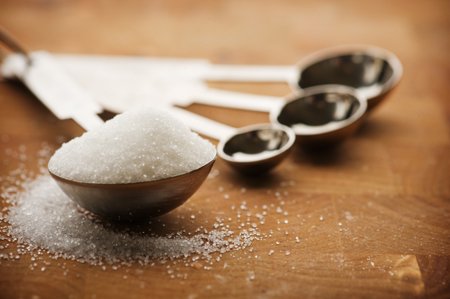
The mafia is too powerful to be saddled, broken or defeated, powerful enough to change the fate of governments and government functionaries as seen in the past.
Good luck to Prime Minister Imran Khan who once told a friend, “I know that I cannot stop corruption, but if corruption is proved against anyone from my party or my ministers, I will not intervene to save them.”
It seems that this time of test and trial has come for the prime minister. So, let us see how the premier handles this situation in the face of all odds.
Thatta Sugar Mills (TSM) of the Sindh Sugar Corporation of the government of Sindh was the pioneer of sugar industry in Sindh. It was a very well-planned venture to promote the sugarcane-based industry and diversify from conventional crops grown in lower Sindh.
The industry was established with R&D for seed development to suit the climatic and soil conditions for optimum production per acre and best sugar recovery from the cane grown according to a blueprint prepared by R&D of TSM.
There are farmers, who got 2,000 maunds (40 kg) per acre by strictly following the blueprint. The zoning system was introduced where each sugar mill had a prescribed area from which it could purchase sugarcane.
End of zoning
There is no dearth of opportunists. In 1987, there was a glut of sugarcane in lower Sindh but sowing was less within the zone of TSM. The influential opportunists did not waste time and managed to influence the government of Sindh to do away with the zoning and with it sugarcane was transported from one area to another, bringing in disease and low-quality sugarcane for crushing.
With the end of zoning, the big farmers and opportunists progressed whereas the small farmers suffered. In zoning, the sowing of crops in every area was controlled, whereas it became impossible to do so after de-zoning.
Mill owners blackmail the government that since they cannot sell the stocks, they cannot pay the farmers. The farmers raise hue and cry and block roads and the situation becomes politicised.
The only solution, exports. But yes, who is going to buy expensive sugar, so they turn to the government to give them subsidies to ship their sugar else they cannot pay the farmers. And the cycle goes on and on. In 2019, the farmers in Punjab came out on roads and blocked highways. Although the government thinks that it is supporting the farmers, but end-beneficiary are the sugar mills.
Cartels are so strong that before the government punishes them, they punish the government. Under the circumstances, it is most unlikely that those responsible for the recent crisis will be punished.
Cover-up
The question arises that if there was excess sugar, then why the repeated increase in prices. As a cover-up, exports are shown mostly to Afghanistan. It is not sure if the exports really took place.
As said before, the sugar mafia has the capacity to topple the government that is already engulfed by the problem of coronavirus, in an economic crunch and political turmoil. In the process of production, the labs are under the control of mill owners themselves. They can show low recovery of sugar from the sugarcane supplied, produce much more and get the benefit of not paying taxes on this extra sugar produced and sold in the market. If there is low sugar recovery, then more bagasse is produced, but who is there to check.
Unfortunately, whereas there is a general tendency of being prone to destroying systems for the benefit of just a few, it is the country that suffers in the process. How to overcome a crisis when the root is corrupted?
Those who benefited due to de-zoning, must be cursing the author of this article after reading it. In the event of a monopoly by the mill owners, the small farmers suffer the most.
The production of sugarcane per acre becomes higher closer to the equator, for example, the average production of sugarcane in Cuba is 2,000 maunds and in Pakistan, it has never been more than 450 maunds.
In Brazil, they were considering sugar as a byproduct whereas the biofuel produced from molasses was the main product.
Subsidies allowed by the government generally go into the pockets of mill owners rather than the farmers in general. The collection of sugarcane cess has also become a far cry in the process. This fund was used to manage access roads to farms for the transportation of sugarcane within zones.
Unfortunately, the policymakers who are at the helm of affairs, develop policies for their own benefit and not for the farmers in general or for the benefit of the country.
Furthermore, beyond their political priorities, they should think about the country’s citizens and small farmers rather than becoming a slave in the hands of the opportunists within their own political parties. This applies to the present government as well.
It is, therefore, necessary that heads and hearts are put together to revisit policies in every sugarcane-producing province, so that new policies are devised for the best benefit of the country and the small farmers.
A mechanism should be considered for the sowing of crops in each district of such provinces by maintaining a balance between different crops and this process should be strictly controlled and its sustainability ensured.
The writer is former deputy managing director of Saindak Copper Gold Project
Published in The Express Tribune, April 20th, 2020.
Like Business on Facebook, follow @TribuneBiz on Twitter to stay informed and join in the conversation.








































COMMENTS
Comments are moderated and generally will be posted if they are on-topic and not abusive.
For more information, please see our Comments FAQ